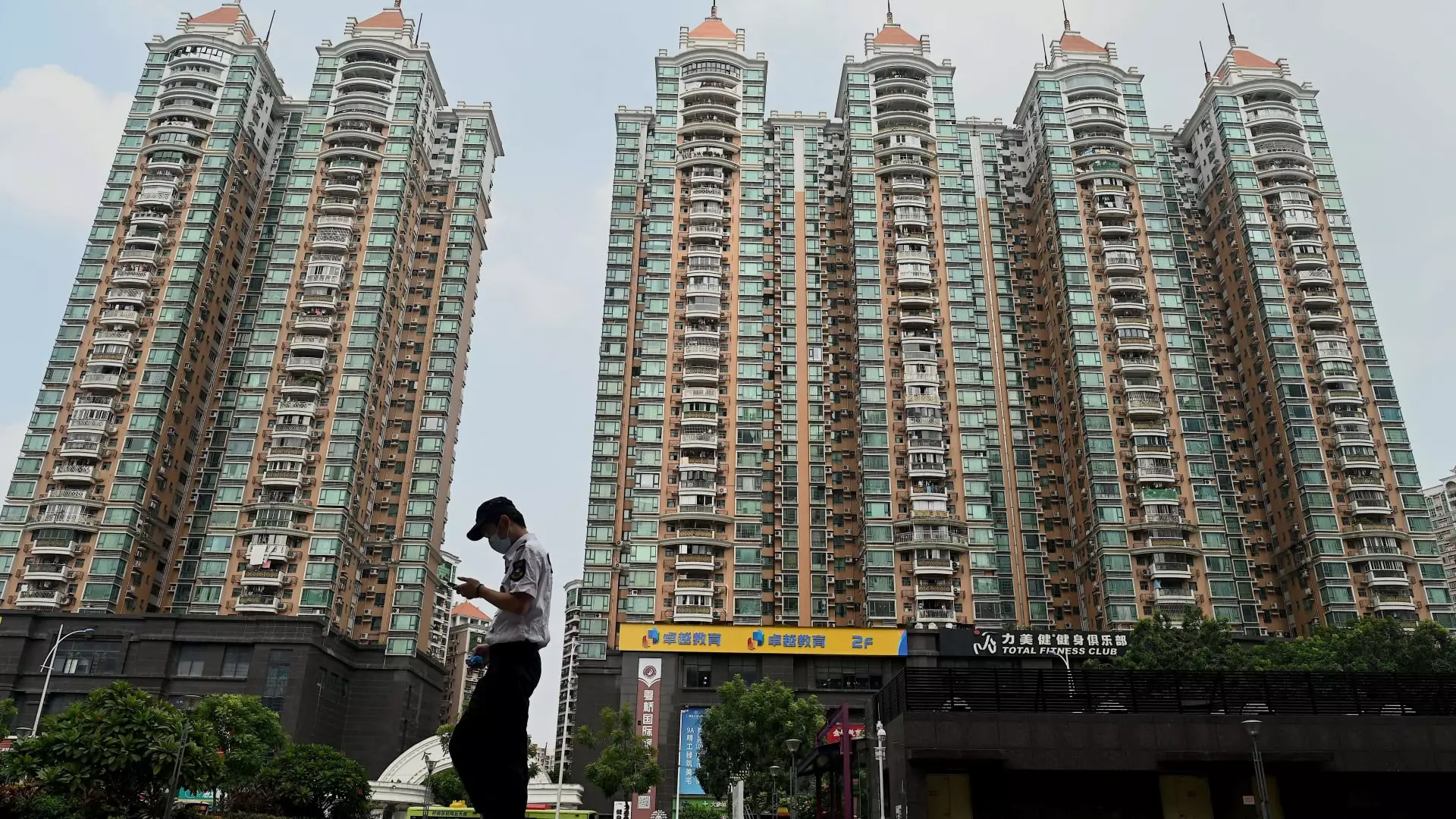In a scenario that many thought would remain stagnant, shares of Chinese property developers experienced a surge on Monday, prompted by newly announced measures from major mainland cities aimed at rejuvenating homebuyer interest. The central bank’s recent policy stimuli effectively set the stage for these significant modifications, fostering a sense of optimism among investors. The easing of restrictions, particularly in cities such as Guangzhou and Shanghai, illustrates a paradigm shift in the approach to home buying amidst a persistent housing crisis.
The city government of Guangzhou recently lifted all existing home purchase restrictions, an action that is set to invigorate a market burdened by previous limitations. Previously, migrant families were subjected to an arduous requirement of being tax or social insurance contributors for a minimum of six months prior to purchasing two apartments. In stark contrast, single individuals were confined to owning only one property. The relaxation of these rules, effective immediately, is intended to create a more inviting environment for buyers.
Shanghai is also following suit, with officials cutting the required tax-paying duration for home purchases down to just one year from the previous three years. Additionally, the down-payment ratio for first-time homebuyers now stands at an attractive 15%, compared to higher national averages, thus lowering the entry barriers for home ownership. For those aspiring to buy second homes, the down-payment has also been reduced to around 25%. Similar measures are being seen in Shenzhen, where regulations restricting local families and individuals have been eased, allowing for an additional apartment purchase in specific districts.
The immediate market reaction to these reforms has been overwhelmingly positive. The Hang Seng Mainland Properties Index reported an impressive 8.36% increase in early trading on Monday, which followed a more than 30% rise the prior week. This rally reflects heightened investor confidence, with notable gains among publicly listed property developers, including Longfor Group Holdings and Hang Lung Properties. This sudden surge in share prices indicates a strong sentiment that easing restrictions could ignite sales and reverse the longstanding downturn in the real estate sector.
The CSI 300 index also soared by 6% on the same day, marking the most significant uptick in almost 16 years, with the Real Estate index showing a strong 7% increase. Such inspiring figures underscore a robust potential for recovery, particularly in tier-one cities like Beijing, a trend that analysts suggest may not be replicated in smaller cities due to differing market conditions.
The easing measures arise from a broader strategy initiated by the central government, which has declared a need to combat the ongoing property slump. The directive of establishing a stable recovery resonates with the urgency founded by President Xi Jinping’s latest discussions with top officials. The People’s Bank of China’s adjustments, including a reduction in mortgage rates and down-payment ratios for second homes, also form part of this concerted effort to revive consumer confidence and stimulate demand.
Despite these initiatives, analysts like Allen Feng and Gary Ng convey a cautious perspective, emphasizing that while first-tier cities may experience significant boosts, the effects might be limited in smaller cities with excessively high inventory levels. They argue that the structural issues plaguing real estate demand need more than just legislative changes—they require deep-rooted economic reforms to foster a sustainable recovery.
To truly uplift the struggling real estate sector, experts such as Erica Tay suggest that China must concentrate on finishing stalled construction projects and addressing abandoned properties. With only a modest percentage of built space completed this year, revitalizing existing projects could play a pivotal role in restoring faith among prospective buyers.
As the government continues to grapple with the fallout from its aggressive regulatory measures initiated in 2020, finding the right balance between intervention and market autonomy will be critical. The latest easing measures are promising, but without multi-faceted solutions to rebuild trust among consumers, the path to a stable recovery may remain fraught with challenges.
The recent easing measures introduced in China’s property market mark a foundational shift aimed at rekindling buyer interest and addressing the long-standing issues within the sector. While the initial market reactions are promising, the real test lies ahead in sustaining this momentum and ensuring that the underlying problems are effectively addressed. With careful navigation and continued policy efforts, the prospect of rebounding homebuyer sentiment is within reach, potentially revitalizing an industry that has long been a crucial pillar of the Chinese economy.

